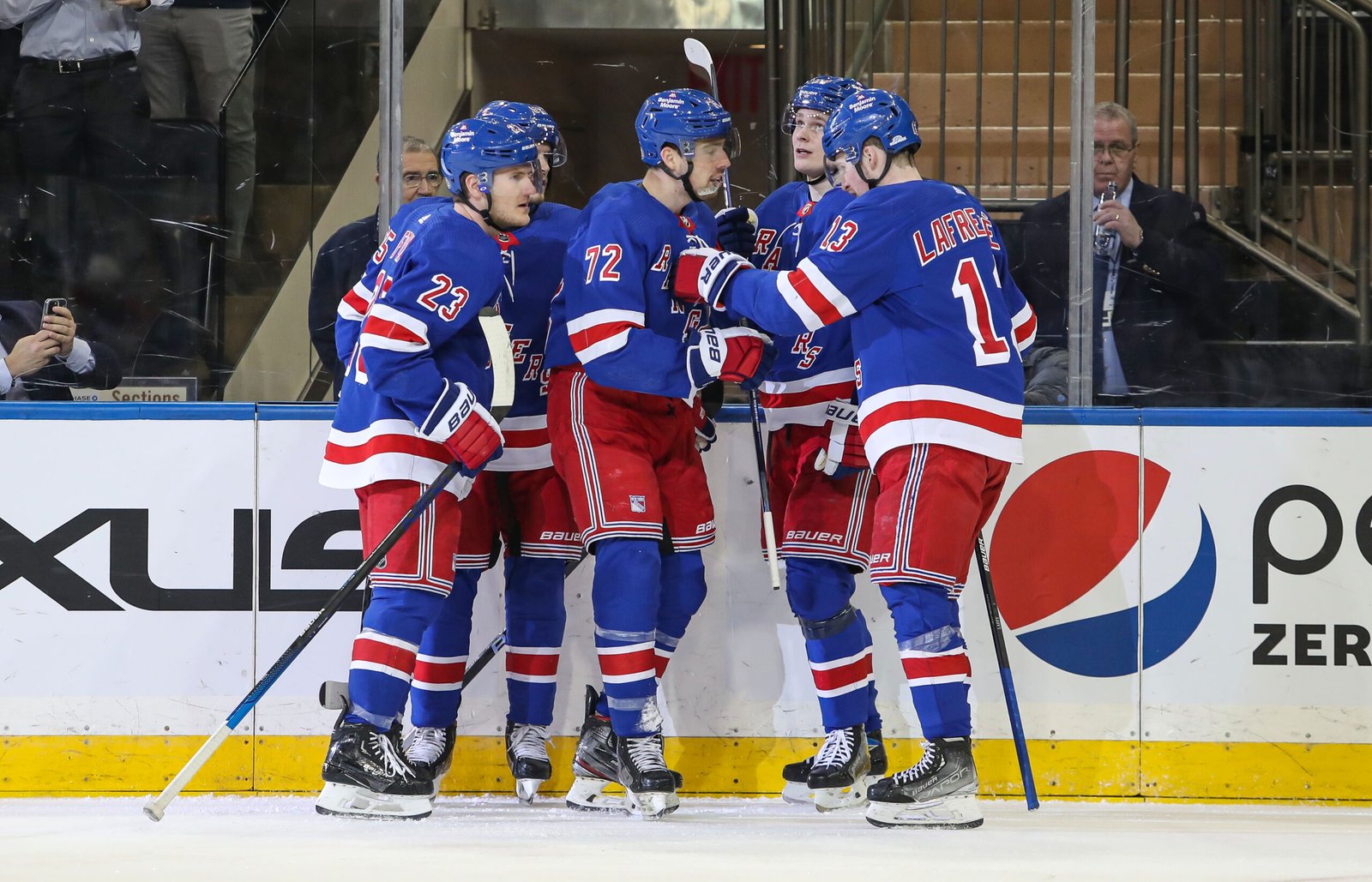The good, the bad, and the ugly of Peter Laviolette has been on display this season. Recently the focus has been on the ugly, and for good reason, as many iterations of new Rangers lines have simply done more harm than good and addressed a problem the Rangers didn’t have. The new Rangers lines, instead of helping, knocked the Rangers back into their 5v5 woes, something that has forced the goaltending to be near perfect the last few weeks.
Perhaps it’s best to start at the beginning, which is when Ryan Lindgren returned. Not to put everything on him, but it’s clear he’s struggling. Laviolette juggled defense pairs that were working quite well, breaking up K’Andre Miller-Adam Fox and Braden Schneider-Jacob Trouba, to re-insert Lindgren while also keeping a still-wet-behind-the-ears Victor Mancini in the lineup. Eventually, Laviolette got Zac Jones back into the lineup, but went back to ole reliable, which isn’t so reliable anymore.
To be clear, this is not about one player. It’s about a mindset of coach, GM, and players to revert back to comfort instead of what worked. Using Natural Stat Trick’s defense pairs tool, we see very clearly that the original top-four were solid.

To make this a bit easier to read, green is good and red is bad. Yellow is not ideal but manageable. We knew Jones-Mancini was the weak link to start the season, mostly due to Mancini’s learning curve at the NHL level. Mancini will be an NHL player, but it looks like he needs more time. Still, that’s not the point. The point is the top-four was solid and a simple Jones-Lindgren pairing, without breaking up the top-four, was the right choice.
Instead, the pairs got wrecked and in an attempt to fix it, we got new Rangers lines and another whole mess. The simple answer to this was “less is more” and, if Lindgren absolutely needs to play, putting him with Jones. Alas, this was not the case.
Lindgren-Fox and Miller-Trouba have simply not been good, with Miller-Trouba being absolutely horrid. Even when you take matchups and roles into account, they are sub-35% on every major possession category. That’s not good. Only Jones-Schneider is above water in terms of quality, but not quantity.
New Rangers lines created more issues
With the defense pairs going back to ole reliable, which isn’t so reliable anymore, Laviolette’s answer was to go with new Rangers lines, for better or for worse. While the new Rangers lines may have been an attempt to get Mika Zibanejad going, it created far too many variables for the Rangers.
When trying to solve a problem, it’s best to isolate as many variables as possible. For example, if you’re trying to find a leak in your house, you first run the shower, then the sink, then flush the toilet, and you keep going with any other water lines in your bathroom. You don’t run two at the same time. Laviolette ran the sink and the shower at the same time, and determined both were the issue. See the problem?
Since the new Rangers lines coincided with Lindgren’s return to the lineup, and remember that correlation does not equal causation, the Rangers have been getting slaughtered at 5v5. This is not due to Lindgren’s return, though we do need to question how his injury(ies) has been handled, and though it’s a contributor, it’s not the only reason why the new Rangers lines have failed so spectacularly.
Is there a clear answer?
The big question is whether there is a simple fix to the Rangers. The good news is that yes, there is a simple answer. It’s to revert back to what worked, leaving all prior variables the same. Go back to the opening night lineup and pairs, save for a Lindgren/Mancini swap.
Using the leak example above, this isolates all other variables to see if a Jones-Lindgren pairing will work. In the scenario where it works, and the Rangers still struggle, then we know the issue is at forward. If not, then we know at least one issue is on the third pair, and can be addressed accordingly.
With one issue potentially isolated, then and only then will it be time to tinker and find new Rangers lines, if needed. But by changing everything at once, Laviolette misses the forest for the trees and creates too many variables to truly isolate what isn’t working. This isn’t a Laviolette issue either, it’s a problem we see across all teams, coaches, GMs, and in life outside hockey too.
Less is more. The new Rangers lines addressed a problem they didn’t have. It’s time to slow things down, reunite what worked, and make small tweaks to identify the true needs. Big shuffles aren’t always the answer. In fact, they rarely are.


Recent Comments